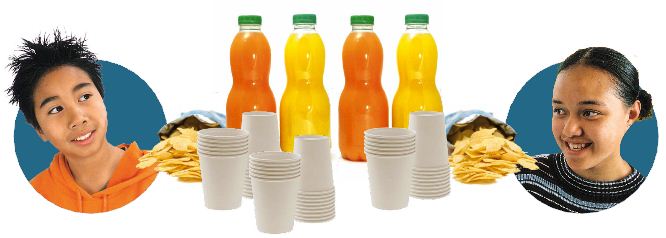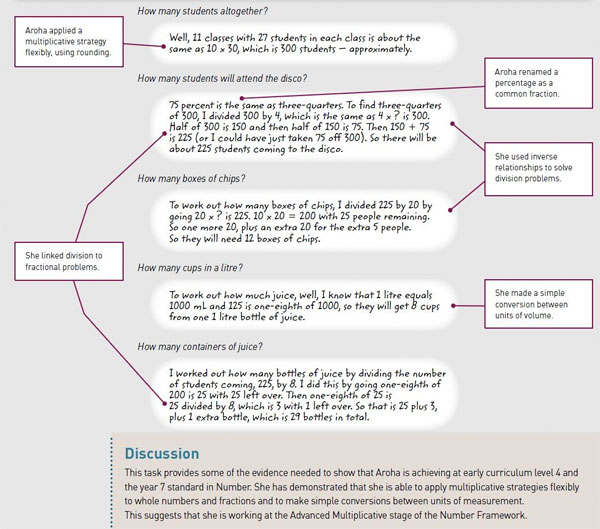 How Many?: Illustrating the year 7 standard
How Many?: Illustrating the year 7 standard
The task used in this illustration was part of a Number lesson in a year 7 class. The task relates to achievement objectives for Number and Algebra from the mathematics and statistics learning area in The New Zealand Curriculum.
The Task
How Many?
Bronnie and Simon are organising drinks and packets of chips for the school disco. They want to estimate how many of each they will need.
They have the following information:
- There are 11 classes coming to the disco.
- Each class has about 27 students.
- Usually about 75% of the students come.
- There are 20 packets of chips in a box.
- Each person will be given 1 packet of chips and 1 cup of juice.
1. Bronnie and Simon have 1 L bottles of juice. They want to fill cups that hold 125 mL. How many cups can they pour from 1 bottle of juice?
2. They don’t want to have lots of juice and chips left over. How many bottles of juice and boxes of chips should they buy?
| New Zealand Curriculum: Level 4 | National Standards: By the end of year 7 |
|
In solving problems and modelling situations, students will:
|
|
|
Number and Algebra
|
Number and Algebra
|
|
Geometry and Measurement
|
Geometry and Measurement
|
Hover over the image to zoom a section. Click on the image to enlarge it. Click again to close.
PDF of this task and Illustrations of the year 6 and 7 standards (1.35MB)

